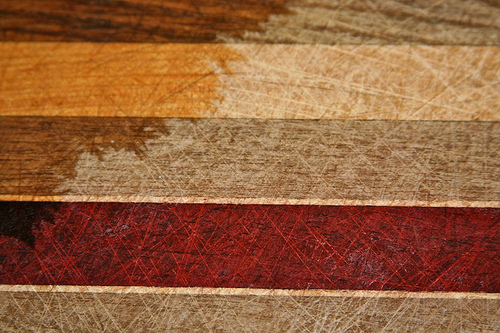
Sometimes it seems like the world is full of overwhelming choices. Dairy milk or soy milk? Paper or plastic? Soda in cans or soda in bottles? And when it comes to the kitchen, plastic or wood cutting boards?
The answer is, it depends.
From a food safety perspective, the data is surprisingly mixed. Plastic cutting boards can be run through the dishwasher, which gives them a sanitizing bath in superheated water. However, plastic cutting boards are also more prone to nicks and scratches, which can harbor bacteria. And because plastic holds moisture better, plastic boards can allow bacteria to breed more readily.
On the other hand, wooden cutting boards have to be washed by hand. Not only is this less sanitizing, it also means that people are less likely to do it as often because it's a hassle. Particularly since wooden boards tend to be heavier and thus more awkward to wash.
On the other hand, wood turns out to be a very hostile medium for bacteria, thus bacterial growth is often much less on wooden cutting boards. This effect is much more noticeable in a wooden cutting board which has been properly oiled. (Although many people don't oil their cutting boards, either because they can't be bothered, or because they don't know they are supposed to.)
There is one way in which wooden cutting boards are clearly superior: plastic boards tend to slip around on a damp counter, whereas wooden boards (being heavier, with more traction, and often having feet) will not slide out from under you while you're slicing that onion. If you have a plastic cutting board on a damp counter, lay a paper towel beneath it to help keep it in place.
Plastic cutting boards are cheaper and available in a variety of styles to match your kitchen décor. But personally I prefer good old-fashioned wood. How about you?
Image courtesy Flickr/E>mar

0 comments